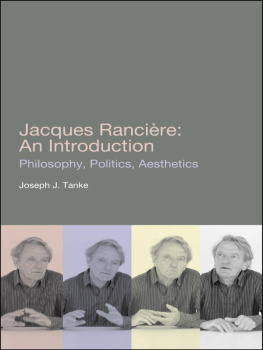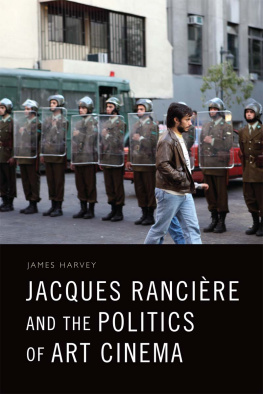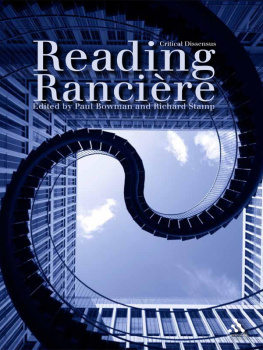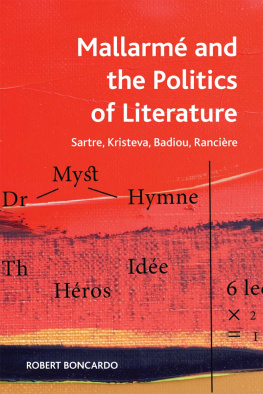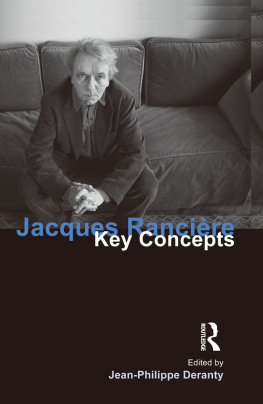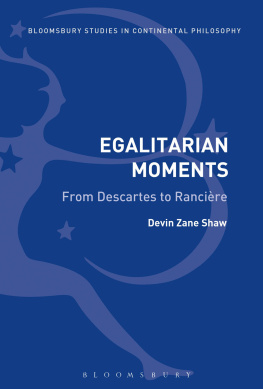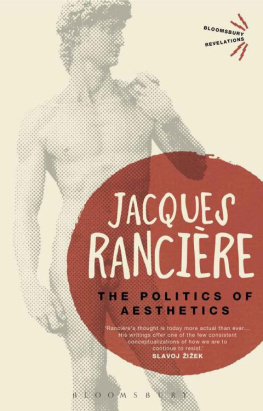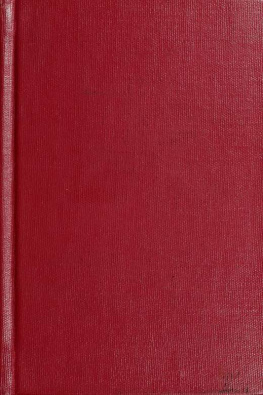JACQUES RANCIRE: AN INTRODUCTION
Also available from Continuum:
Chronicles, Jacques Rancire
Dissensus, Jacques Rancire
The Politics of Aesthetics, Jacques Rancire
Jacques Rancire: Education, Truth, Emancipation, edited by Gert Biesta and Charles Bingham
Forthcoming:
Althussers Lesson, Jacques Rancire
Mallarm, Jacques Rancire
Jacques Rancire and the Contemporary Scene, edited by Jean-Philippe Deranty and Alison Ross
Reading Rancire, edited by Paul Bowman and Richard Stamp
JACQUES RANCIRE:
AN INTRODUCTION
JOSEPH J. TANKE

Continuum International Publishing Group
The Tower Building, 11 York Road, London SE1 7NX
80 Maiden Lane, Suite 704, New York, NY 10038
www.continuumbooks.com
Joseph J. Tanke, 2011
All rights reserved. No part of this publication may be reproduced or transmitted in any form or by any means, electronic or mechanical, including photocopying, recording, or any information storage or retrieval system, without prior permission in writing from the publishers.
British Library Cataloguing-in-Publication Data
A catalogue record for this book is available from the British Library.
ISBN: 978-1-4411-3504-9
Library of Congress Cataloging-in-Publication Data
Tanke, Joseph J.
Jacques Rancire : an introduction / Joseph J. Tanke.
p. cm.
Includes bibliographical references and index.
ISBN 978-1-4411-6770-5 ISBN 978-1-4411-5208-4
1. Rancire, Jacques. I. Title.
B2430.R27T36 2011
194dc22
2010038361
For My Grandparents, Frank and Wilma Szomoru
CONTENTS
ACKNOWLEDGMENTS
Books rarely have simple origins. They emerge from multiple contexts, respond to various conversations, and bespeak numerous relationships only too fleetingly hinted at in their pages. This book is no exception. It was undertaken with the support of the Chalsty Initiative in Aesthetics and Philosophy, the Provosts Office, and the Division of Humanities and Sciences at California College of the Arts. While working on this study, I profited greatly from conversations with colleagues, students, and friends, many of whom were generous enough to read and discuss portions of what I wrote. In particular, I would like to thank Jim Bernauer, Ignacio Valero, Fred Dolan, Brenda Wirkus, David Rasmussen, Emiliano Battista, Marie-Eve Morin, Jon Meyer, Tzuchien Tho, Doug Hall, Mat Foust, Dan Russell, Tirza Latimer, Tina Takemoto, Anthony Marcellini, Elyse Mallouk, Lynne McCabe, Rob Marks, Matthew Rana, and Paola Santoscoy. Cody Hennesys time and talents greatly facilitated the research conducted for this book. An extra expression of gratitude is owed to Colin McQuillan. During the books final stages, he played for me the part of the ignorant schoolmaster. His careful readings forced me to improve my arguments and to refine my forms of expression. I am grateful as well to the editorial staff at Continuum for their enthusiasm for this project, especially Sarah Campbell, Tom Crick, and David Avital. Finally, I would like to thank Professor Rancire for his encouragement, time in conversation, and responses to questions regarding his position.
My work would not have been possible without the support of my parents, Jim and Claire Blanca, and my partner, Molly Slota.
This book is dedicated to my grandparents, Frank and Wilma Szomoru, who have been an inspiration for as long as I can remember.
INTRODUCTION
What follows is an introduction to the thought of Jacques Rancire. While introductory studies of philosophers often proceed by means of commentary, it would be perhaps the height of irony to offer readers good enough to expend energy on the pages I have composed an exegesis of texts. Rancire is quite critical of explication and the assumptions it makes regarding the intelligences of students, readers, and, in artistic contexts, spectators. In many instances, he views such procedures as hostile to what is the defining element of his thought, be it in a philosophical, political, or aesthetic context, that of equality. Rather than an exegetical introduction, I hope that my text will be viewed as a reading. It is no doubt one among many, and it recounts the course I have been tracking through Rancires works for a number of years now. Throughout, I have analyzed and commented on portions of Rancires texts, not, I hope, to achieve the satisfaction of the one who knows, but to set in motion and clarify my intellectual adventure. In many places I have made arguments about how certain texts should be read, and how many concepts can prove useful for conversations on topics as diverse as the history of philosophy, critical pedagogy, politics, art, and cinema. These operations were necessary for me to find my way through the forest of signs Rancire has been scattering for over forty years, and they may prove useful to others. I do not view arguments or textual analysis as undermining the supposition of equality. On the contrary, most forms of expression want to be understood, and for this reason posit a community of equals.
This study follows Rancire as he attempts to analyze what he calls the distribution of the sensible [lepartage du sensible]. This is the key concept in our story, for it unites the discussions of philosophy, politics, art, aesthetics, and cinema, all of which are conceived as practices of creating, distributing, contesting, and redistributing the sensible world. The French formulation, partage, has two senses that are easily lost in English, but which are nevertheless essential for the analysis Rancire conducts. In the first instance, it describes how partitions or divisions of the sensible structure what is seen and unseen, audible and inaudible, how certain objects and phenomena can be related or not, and also who, at the level of subjectivity, can appear in certain times and places. The distribution of the sensible is thus a general distribution of bodies and voices, as well as an implicit estimation of what they are capable of. In the second sense, partage indicates that these distributions are shared. The distribution of the sensible is a sharing of the sensible that refers itself to the principles and forms of relation that are part of a common world. To partage the sensible is thus to parcel out spaces and times, so as to create a shared or common world containing different allotments. Depending upon the context, and to avoid repetitiveness, I have employed a series of related wordsdistribution, division, partition, configuration, and so onto refer to this idea. For Rancire, it is important to attend to the sensible, for its distinctions and divisions anticipate what becomes thinkable and possible. The sensibles distribution provides to thought its picture of the world, supplying the evidence of what can be conceived, discussed, and disputed. The conceivable in turn structures what presents itself to thought as a possibility for further thought and/or action. In its very givenness, it supplies possible courses of action, forms of relation, as well as new thoughts and sensible configurations. The distribution of the sensible thus ultimately defines, for Rancire, the field of possibility and impossibility. One can unite these three domains quite simply by noting that in French

